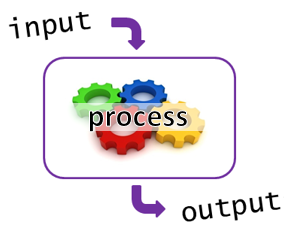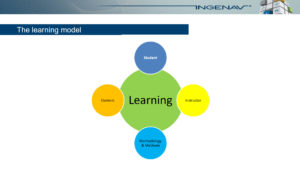A couple of months ago I was invited to write an article for the IFATCA Controller magazine about the 1st 100 years of training. Here is the text of that article:
Looking back at the past 100 years, it is astonishing to see how fast the aviation industry developed. In doing so, a need was created to ensure order and safety in flight, and at airports. Air Traffic Control developed in order to meet the demands of safety standards of the young aviation industry.
The pioneers of this new air traffic control discipline learned from experience. They developed best practices which were gradually turned into rules, procedures and regulations, initially at aerodromes but gradually expanding as aircraft extended their range.
These pioneering air traffic control experts not only wrote the rules they had adopted: they also began to hand down their knowledge and skills to new generations of controllers. In doing so, they became the first instructors. They held the body of knowledge that bidding air traffic controllers needed before they could move on to practice on-the-job, under the supervision of an established controller: principles of flight, navigation, communication, air traffic procedures. As air traffic grew in volume and complexity, so did the air traffic control system, though almost always slightly lagging behind. As the system matured, so did the realisation that an air traffic controller needed particular skills. Until then, the main criterium for eligibility as a controller was intellect: one needed to have an appropriate educational background. With the realisation that particular skills were also needed, came a new challenge for training: how do we train those skills to the adequate level?
The answer was through simulation that could expose new controllers to situations that they would possibly experience one day, but that were far from guaranteed to happen during on-the-job training. It made controller training more efficient and neutralised the higher exigencies borne from the fact that air traffic was becoming so complex that in certain units the on-thejob training, without of the use of prior simulation was becoming very long.
Over the years, these simulators became increasingly sophisticated. Tower simulators were initially little else than model airports with various ways of moving model aircraft around. More recently, they have benefitted of powerful 3d graphics generation and projection possibilities that can reproduce the most challenging tower situations.
When I joined ATC in 1995, I discovered a particularly mature system in which the body of knowledge, divided into subjects (what all of us mostly know) was taught first, followed by simulation on generic situations, followed by transitional training from the generic to unit specific and finally to on-the-job training. Almost 30 years have passed since then, and ATC training continued to evolve, growing increasingly sophisticated. Apart from initial training to qualify as a controller, there was an increased need to establish requirements for maintaining the competence and to periodically refresh skills and knowledge. Development training, first for instructors, then for assessors and for other functions developed. Regulation also became with time more sophisticated, and more dominant, with minimum requirements for training to achieve competence, to maintain competence, to train others and to assess competence.
With the continuous development of the science of human performance and growing understanding of its link to safety, training in applied human factors (notably team resources management) passed from being a best practice to (at least in Europe) a regulatory requirement. Teach and instruct has grown to include facilitate and to coach. None of these four “teaching” techniques can be singled out, as they complement each other and should be used as needed. Students are actively encouraged, most of the time not only to “just” learn but also to reach their best performance and potential. Controllers who act as instructors and assessors are better supported. Maintaining and monitoring competence in day-to-day operations have gotten a lot more focus over the past decades. Air traffic control training has definitely matured in these first 100 years!
But there are still areas where we can improve. Unfortunately, with explicit regulation becoming very prominent, we tend to forget best practices and good intentions. Performance is measured against regulatory requirements, often ignoring common sense. In some cases, there is even a trend towards mediocrity and doing the minimum possible, rather than seeking excellence. In more extreme cases, it has created a race to the bottom, even if we do not know where that would be. Our regulations far from perfect. They dictate things from a common agreed minimum and, in many cases, there is the unfortunate assumption that compliance with a regulation is a guarantee to obtain the desired outcome. Organisations feel compelled to comply with regulatory requirements, while looking for the cheapest solutions. They are at risk of unlearning essential skills that brought us to where we are and instead. Instead, we explore the lower limits of where training can be rather than to aspire to explore the upper ones.
So where do I think we will go in the next 10 years? The pessimist in me says that we could keep exploring the race to the bottom until we are confronted with or exposed to serious threats to our safety records. It will then take significant cost and effort to fix the system that we have dismantled. But the optimist in me says that we have always shown professionalism and that we are part of an industry that has always been concerned, at times to the limits of a healthy obsession, with excellence and safety. If we go this way, I can see us progress in three main areas:
1. We continue in our increased understanding of performance and to advance in our teaching techniques to help student controllers and also our qualified colleagues to reach and maintain the level of competence needed.
This will pass through the further professionalisation of our instructors, both on-the-job and especially in our schools where we will continue to improve our learning to master a broad number of techniques and skills including coaching, skills training, the understanding of the human factor, the human – automation interface and so forth.
2. The continuous improvement of technology that needs to accompany our understanding of how performance is acquired and maintained. That we understand which are the fundamental skills of tomorrow´s controller and have the support, through for example sophisticated modules and simulators, to train them and build on them in a seamless way from the beginning through the achievement and maintenance of competency. To better blend skill
with knowledge acquisition rather than seeing them as two distinct parts.
3. The third is the training of how we as controllers and our students learn to reflect on our performance, how we learn how to analyse our strong and weak points periodically and frequently stop from the action – reaction duo and include the reflection and make it a threesome (a bit like the famous first de-briefing question we all teach in the OJTI course: “How do you think you did today, Max?”). We can then grow into self-directed learners of our own profession, diagnosing our needs and asking for help as we find necessary.
In this way, I believe we can move into full maturity for the next 10 and perhaps 100 years, so that human- centricity in our sector takes its full meaning: that we are not only used because there is no other way without us but that we are the conscious part of an increasingly automated system.



